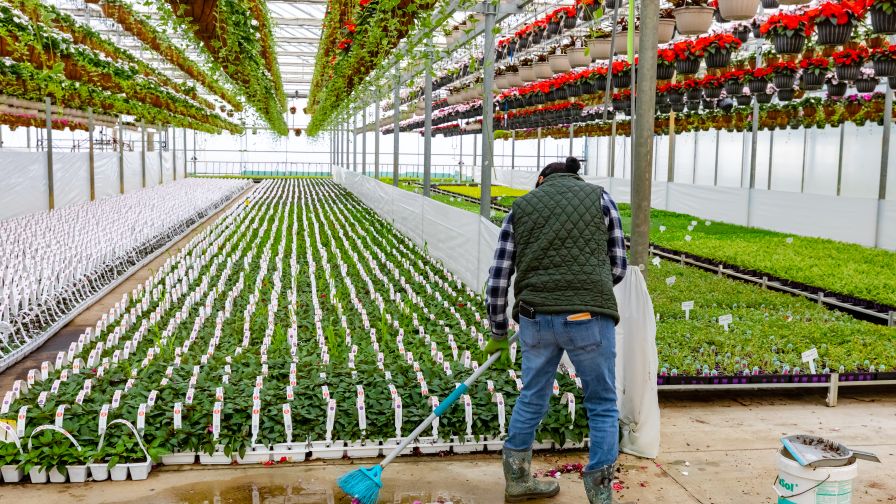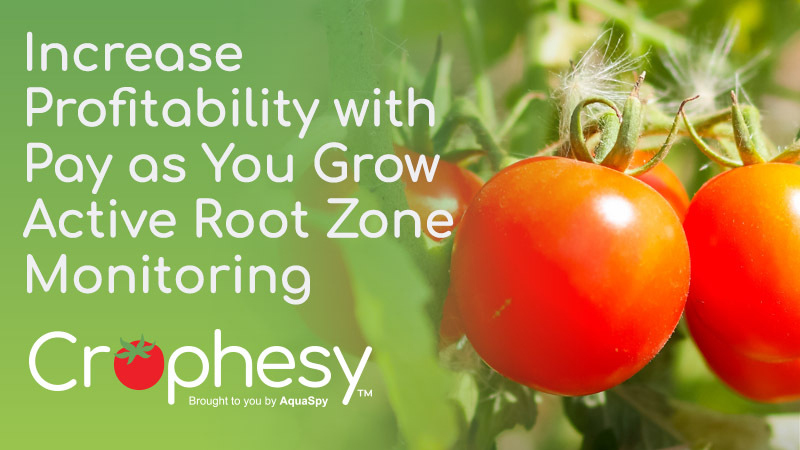Protect Your Greenhouse Employees and Customers From Slips, Trips, and Falls This Winter

Photo: Hortica
As the year comes to a close, you’re likely fulfilling customer orders and preparing for 2024. However, with winter fast approaching, one common hazard could interrupt your team’s plans.
Slips, trips, and falls are a year-round risk. Yet they can become even more prevalent when snow, ice, and wet surfaces are present.
While the name “slips, trips, and falls” may sound harmless, they can sideline your workers for weeks. The same risks can also lead to lawsuits if customers are hurt on your property.
Fortunately, you can help prevent these accidents.
Let’s explore the latest data and a few reminders you can take back to your team.
Slips, Trips, and Falls Remain Too Common
More than 2.8 million nonfatal workplace injuries and illnesses were reported by private employers in 2022 according to U.S. Bureau of Labor (BLS) data. That number signals a 7.5% increase from 2021.
Slips, trips, and falls consistently account for nearly a quarter of these incidents each year.
The result? Sprains, strains, fractures, and other serious injuries — all of which can lead to days away from work.
Greenhouse and garden center facilities can also add additional risks for injury. Humidity, wet floors, uneven walking surfaces, and ladders are common throughout most premises.
Snow and ice during winter only add to the challenge for your employees and customers.
The Severity of Slips, Trips, and Falls
While the frequency of slips, trips, and falls remains high, it’s also one of the leading categories for workplace fatalities.
In 2021, 5,190 fatal workplace injuries were recorded. Slips, trips, and falls accounted for 850 of the fatalities, or 16% of all incidents.
While greenhouse and garden center staff may use ladders to reach plants or work on roofs, it’s not just falls from heights driving severity numbers. 145 falls on the same level led to fatalities in 2021.
Clear Entrances and Walkways of Snow and Ice
The numbers are clear: slips, trips, and falls pose a significant risk. Here’s what to look for throughout your facilities:
- Pay attention to outdoor walkways, steps, or ramps around your business. These become incredibly slick when snow, ice, sleet, and freezing rain accumulate.
- Uneven sidewalks or potholes can also lead to falls when covered by snow. Clear ice and snow promptly before and during winter storms. Use salt, deicer, or sand to maintain walking surfaces.
- Snow, rain, and mud easily get tracked inside from people’s shoes and boots near entranceways. This quickly creates puddles and slippery floors at entry points.
- Add heavy-duty mats inside doorways to help prevent moisture from being brought in. Consider mats with beveled edges that lay flush to the floor to eliminate tripping hazards.
Reduce Floor Clutter
Floors, aisles, and walkways should be kept clean, dry, and free of clutter at all times.
I’ve seen carts, hoses, cords, and plants all obstruct walkways, which can create additional trip risks. Remove items from walkways when they’re not in use by having your team complete regular walk throughs.
Proper lighting is also critical, especially in stairwells and other low-visibility areas.
While I highlighted snow and ice removal earlier, spills, drips, and leaks can still occur after irrigation and cleaning. Use wet floor signage to alert customers and employees of hazards and clean the area immediately.
Encourage Proper Winter Footwear
Proper housekeeping is the first step to mitigating slips, trips, and falls. However, you can also take steps to remind employees about winter safety.
Make sure all employees have appropriate shoes for winter conditions. Encourage slip-resistant footwear with heavy treads when snow or ice are expected. If necessary, consider supplying employees with shoe grippers or cleats for added traction.
Evaluate Facility Enhancements
As you evaluate your premises both now and in the future, there may be opportunities to winter-prep your greenhouse moving forward. Here’s a quick checklist to consider as you prepare your facility or identify future improvements:
- Install drains, catch basins, gravel, or rubber mats in typically wet areas.
- Make sure you have enough “Wet Floor” caution signs available for use. At the entrance of your buildings and greenhouses, post “Caution Floors May Be Slippery When Wet” signage, especially if customers visit your business.
- Train employees in garden hose safety and make sure hoses are properly stored when not in use.
- Have floor squeegees in areas that may have standing water to push the water out of the walkways.
- Add improved lighting, handrails, non-slip coatings, and guardrails where needed.
- Repair uneven walking surfaces such as damaged asphalt or concrete.
- Keep automatic doors in good working order to avoid trapped moisture.
- Provide mobile salt or sand stations and snow removal tools.
- Prune landscaping to open sight lines and prevent falling tree debris.
The Takeaway
Slips, trips, and falls are a real risk to your employees and customers, especially during winter. For your business, it can also lead to workers’ compensation and liability claims.
Still, these incidents are often preventable.
By taking a few proactive measures and knowing where hazards exist, you can create a safer property for your employees and customers. The tips I’ve shared should give you a head start, but please reach out to a local expert for recommendations specific to your greenhouse.
Have a safe holiday season and please reach out if you have any questions.









